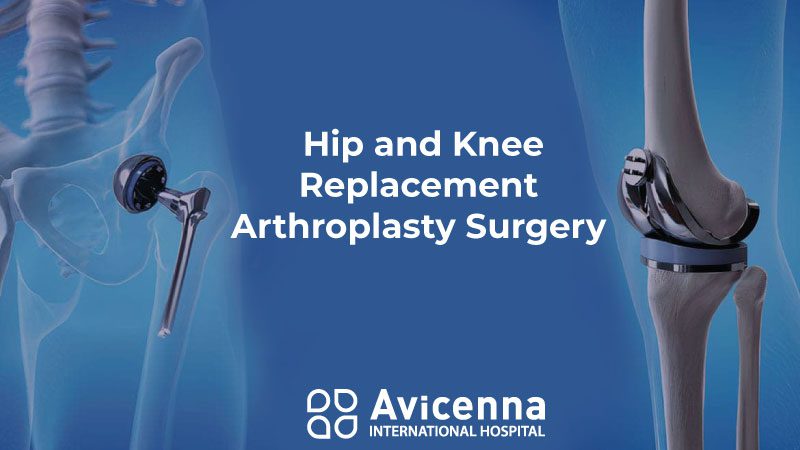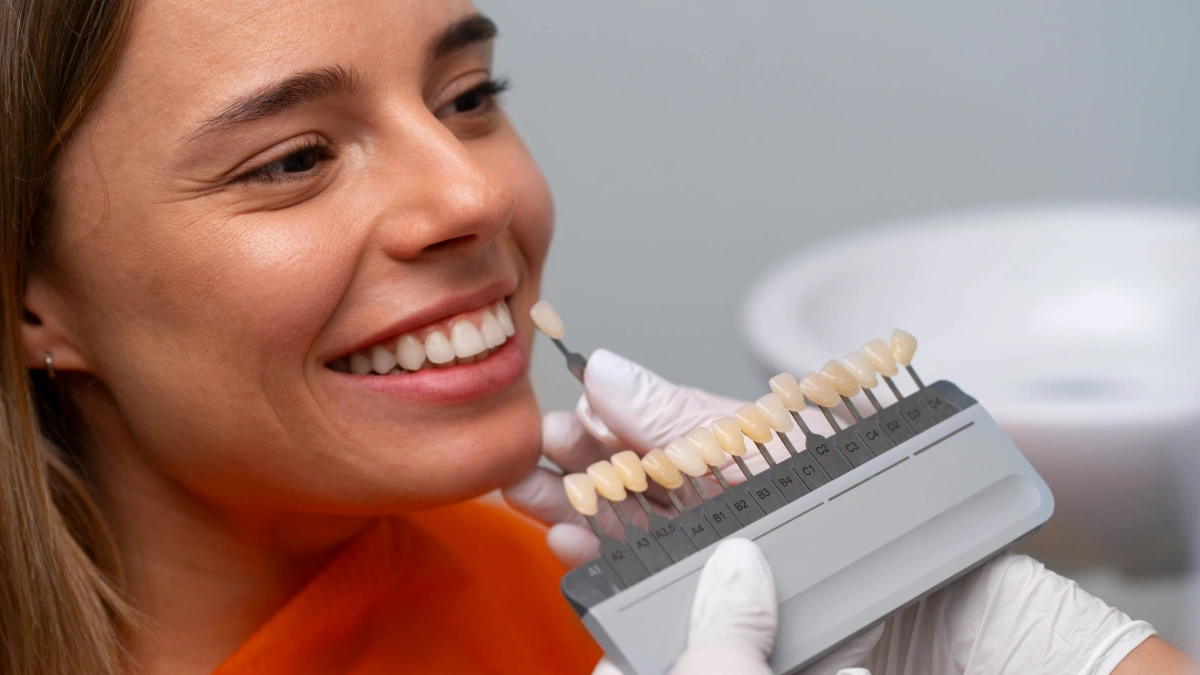Hip and knee prosthesis applications performed with high-level technological methods have various features. In general, prosthesis applications applied to middle and advanced-aged patients provide a comfortable life for the patients. Thanks to this surgical method, successful results are obtained in many patients who, after the surgery, can move their lives comfortably and painlessly. However, the materials used in prosthetic applications need to be high quality and durable.
What is Hip and Knee Prosthesis?
Different treatments are used in patients whose knee and hip joints are damaged for different reasons. The most successful results are achieved by placing prostheses on the hip and knee joints. With the development of general medicine, the so-called prosthetic applications have become stronger – artificial healthy joints appear in the place of amortized and damaged joints.
The prosthetic method is an important application for improving the quality of life of individuals, which can be used in patients of different age groups. This method is preferred by patients to improve the movements of the hip joint and knee, as well as to eliminate the pain. When and how this method can be applied depends on many different factors. The age, amount of pain, range of motion, and sex of the patient are taken into account for arthroplasty.
Types of Hip and Knee Prosthesis
With arthroplasty, it is ensured that the damaged joints are regenerated by surgical methods. When it comes to hip and knee replacement types, different methods come to the fore. Four applications have proven successful in this field. These applications are as follows:
- Resection
- Interposition
- Partial Endoprosthesis
- Total Endoprosthesis
Thanks to the different types of knee and hip prostheses, the quality of life of patients increases. The types of prostheses differ depending on their characteristics and methods of application. To determine the operative method of work, it is necessary to make detailed examinations by specialists in this field. The patient’s health, age and sex may also alter the applications of the prosthesis. The application of prostheses is performed using artificial joints made with high-level technological characteristics.
Knee Prosthesis Types
For various reasons, people experience pain in the knee joint and during a medical check-up, they can face several diseases. Knee replacement surgery is performed for those who suffer from knee pain due to a joint condition called arthritis. As for the types of methods for knee replacement, different techniques come to the fore. Two different methods stand out. It is possible to achieve successful results with total and invasive applications of knee prostheses.
Before proceeding with knee replacement surgery, various methods of treating the patient are tried. If methods such as physical therapy, drug therapy, or injections do not work, two different methods of knee replacement are preferred. Complete replacement of the knee joint is among the main techniques used in such diseases. As a result of applications made with technologies developed around the world, patients are cured.
Types of Hip Prosthesis
One of the methods for treating people with various hip pains is hip replacement. Due to the high success rate, the preferred application is performed by different methods. When it comes to hip replacement, various techniques come to the fore. It is done by replacing parts of the hip structure such as cartilage and bone with healthy joints.
The hospital stay, after the surgery, is 7-10 days, after which the patients can return to their daily activities, and for some time the patient moves with the help of crutches. For the patient to feel comfortable, durable materials are used. Among the applications with a high success rate is Total Hip Replacement. Applications made with materials such as ceramics and metal are usually durable.
How Long Does a Hip and Knee Replacement Prosthesis Last?
Knee and hip prostheses are surgical operations that need to be performed carefully. After the surgery, patients are provided with a high quality of life. One of the questions about these applications is how long does a hip replacement prosthesis last. Duration of use may differ according to various factors. Today, with the advancement of modern medical technologies, long-lasting applications are carried out.
The continuance of the performance of prosthesis applications was much shorter in the past, but today it continually extends. With the latest developments, there is a usage period of 20 and 25 years. The duration depends on the age, health status, gender, and movement status of the patients. It would be beneficial to consult with experts for clear information on this subject. Because in some patients, the period of use may be limited to 15 years.
Knee Prosthesis Usage Period
One of the essential points in modern knee prosthesis applications is how long the usage period is. The duration of use of knee prosthesis varies between 15 and 25 years. In addition to the patient’s height and weight characteristics, age and gender also affect the duration of use. One of the essential points in this regard is the materials used in the knee prosthesis application.
With the increase in the number of durable and quality materials in the modern medical sector, advanced applications continue to be made. The knee prosthesis can be used for up to 25 years without any pain or problems. The experience of the surgeon is significant for the successful implementation of this surgical intervention.
Hip Replacement Usage Period
Hip replacement surgeries were first performed in the 1970s and their success is increasing day by day. There are significant points in hip replacement surgeries. In the beginning, the period of use was short, 4-5 years, today we observe an increase of three times in this period. The duration of use of the hip prosthesis varies according to the filling materials and designs applied during the treatment. Recently, significant advantages have been obtained with the use of quality and highly durable materials.
Thanks to the materials used that prevent wear of the structure called the prosthesis the duration of use of knee and hip replacement applications is increased. The approximate lifespan is 25 years, during which time the patient is provided with long-term health. A wide range of factors, from the health of patients to their characteristics, are significant in determining the period of use.
Knee and Hip Replacement Surgeries
Joint and cartilage diseases are common in middle-aged and over-middle-aged patients. It is possible to find a solution to these diseases, and treatment with prostheses is preferred. When the cartilage wears out for a variety of reasons, discomfort and calcification can occur. Such disorders can occur as a result of ageing, lack of physical activity, and genetic causes. In the presence of any of the listed conditions, surgery to replace the knee and hip joint is possible. Operations developed by modern medicine are recommended in case the desired results are not obtained after physiotherapy and medication.
Hip Replacement Surgery
This surgical method is preferred for joint disorders that cause restriction of patients’ physical movements. Hip replacement surgery is suitable for both young and older patients. Thanks to the operation, the patient can return to his normal standard of living. Medicine today prefers advanced materials and medical techniques to solve the discomfort in the hip joint. In this way, patients can return to their old habits with just one operation.
If the discomfort in the hip joints is not eliminated, the possibility of facing bigger problems arises. Therefore, such diseases that limit the life of the patients and cause them discomfort should be treated without delay. With hip arthroplasty, artificial joints prepared with solid materials are placed instead of sick joints. In this way, the ailments of the patients are relieved to a great extent.
After Hip Replacement Surgery
Hip replacement is an important surgical procedure that should be done by specialist surgeons. With hip replacements done by surgeons and experts in their field, successful results are concerned. One of the significant moments in the postoperative period. After hip replacement surgery, it is necessary to pay attention to physical movements and eating habits. At the same time, it is requisite not to neglect the drugs prescribed by the doctor. Some of the significant issues after surgery are the following:
- Regular physical activity and walking;
- Not making physically demanding movements;
- Daily use of prescribed medications;
- Paying attention to sitting and lying positions;
As mentioned, there are significant points to consider after hip and knee replacement surgery. Faster recovery is possible if these points are taken into account.
Sleep Position After Hip Replacement Surgery
It should pay attention to physical and psychological habits after surgical operations. Many details are significant for the healing process of patients. It will be helpful to pay attention to some issues after hip replacement surgery. In particular, the correct adjustment of the lying position prevents various physical problems. It is recommended patients put a pillow between the legs in the lying position after this surgery. At the same time, it is better to sleep on your back, as it is considered risky to sleep on your side.
Among the significant points to keep in mind during the recovery process is sitting and not crossing your legs. Cessation of strenuous physical movements after surgery to replace the knee and hip joint is one of the factors that would accelerate the recovery process.
Walking After Hip Replacement Surgery
Over time and with the appearance of calcification, the hip and knee joints can cause pain and restricted movement, as they are essential for physical mobility. Problems that occur with the calcification of the joints and cartilage damage can be dealt with through various treatment methods. For the replacement treatment of the joints, some details are significant. It is important to take walks after hip replacement surgery.
After hip replacement surgery, patients are hospitalized for one week. It is significant to lead a calm lifestyle and avoid movements that strain the thighs. At the same time, you may need to receive support, such as walkers, a cane, or crutches, while walking for 1.5-2 months after surgery. Careful movement after knee and hip replacement surgery will significantly speed up the recovery process.
Knee Replacement Surgery
Prosthesis operations applied for advanced joint disorders are valid for different parts of the body. The probability of success in prosthesis operations, which is preferred to relieve pain and discomfort in the knee section, is quite high. Knee replacement surgery may be preferred to relieve pain and regain movement functions.
During the surgery, the problems in the patient’s bones and joints are cleaned first. Then An artificial joint is attached. Along with the developments in technology, the durability of the material used helps to achieve successful results. With the development of robotic knee surgery applications, success rates in various ailments have increased considerably.
After Knee Replacement Surgery
With the development of medical technology, joint diseases in humans are healed much easier. Different physical conditions can be treated successfully, thanks to high-tech techniques. Knee prosthesis surgeries are one of the significant innovations in this field. Durable applications are made from different prosthetic materials. Some details are important in knee replacement surgery. It is important to be careful after surgery. In general, the following points should be considered:
- Regular use of medications prescribed by a doctor;
- Keeping the surgical wound in the knee area clean;
- Do not perform strenuous physical movements;
- Perform the exercises determined by the experts.
Patients who comply with these requirements will have a faster recovery process. For more detailed information on this topic, you can consult with specialists in the Department of Orthopedics and Traumatology of Avicenna Hospital, Ataşehir.
When Will I Recover After Knee Replacement Surgery?
With the developing medical technologies, the number of prosthetic applications has increased. Joint disorders can be eliminated with modern and advanced applications called arthroplasty. There are some significant details that patients who prefer knee replacement surgery should pay attention to before and after the surgery. The patients need to take their medications and do their exercises during the healing process under the control of a doctor. It is possible to walk with a walker for a while after the surgery. It is expected that the healing process will be completed in about 3-4 weeks after the operation.
Contractions After Knee Replacement Surgery
Knee prosthetic applications are among the surgeries that require precision and attention. After surgery, it is normal to feel tightness and pain for a while. Contractions can be felt during physical movements in the knee and hip joints. It is assumed that this situation lasts for 3-4 weeks. If ailments such as tightness and pain persist for a long time, it is necessary to contact your doctor.
Things to Do After Knee Replacement Surgery
It is necessary to pay attention to several main points after the operation, as they are of great importance for the healing process. After the operation, your doctor will likely prescribe blood thinners to regulate blood circulation, which is important to use regularly. For wounds to heal under hygienic and healthy conditions, it is necessary to pay attention to the care and cleaning of wounds. It is important to follow exercise programs regularly and take the medication prescribed by your doctor. If you follow the doctor’s prescriptions after the operation, it is quite possible to quickly regain your comfort and normal lifestyle.
How Long Does the Pain Last After Knee Replacement Surgery?
The postoperative process is very interesting for all patients. The sensation of pain after surgery for a certain period is considered normal. In addition to the pain, there may be various sensations such as contractions or cramps. Importantly, this pain and sensation do not continue intensely after 4 weeks.
It is possible to start walking slowly the day after the operation with the help of a walker or other assistive tools. Within a month of the recovery process, the pain will subside. If the pain lasts longer than expected, contact your doctor for more information. If necessary and at the discretion of the doctor, revision surgery can be applied.
For Which, Patients Are Knee and Hip Prosthesis Treatments Applied?
There are several factors to which a patient is suitable for the prosthetic treatment method used to treat diseases such as rheumatism or calcification. This method of treatment is usually used in patients over a certain age. There are various reasons why surgical treatment should be used in younger patients. If young people have advanced joint and cartilage diseases, prosthetic procedures of the knee and hip joints are preferred.
The age factor is significant in determining the method of prosthetics. The method of the complete joint prosthesis is among the main applications for treatment in patients over a certain age. By performing surgical operations with modern techniques, an average 20-year comfortable life for the patients is guaranteed.
Pain After Hip and Knee Replacement
It is normal to experience pain for some time after surgery. During the first 21 days of the healing process, the soft tissues and the increase in the range of motion between the joints can cause such pain. If the pain persists for a long time after the replacement of the hip and knee joints, it is necessary to consult your doctor. Prolonged pain can have various causes. If he deems it necessary, the doctor may prescribe a second operation to remove the cause, which causes discomfort and pain.
Today, prosthetic surgery applications have been developed to such an extent that pain can be minimized. With rapidly evolving surgical methods, operations are performed in a comfortable and healthy environment.
Knee, Hip Prosthesis Revision Surgery
Knee and hip prosthesis applications, which are among the surgical methods applied for people to live a more active and comfortable life, have continued to develop much faster in recent years. Successful results are obtained in prosthesis applications made with durable and quality materials. However, for some reason, the surgical operation may need to be redone. In case of recurrence, revision surgery is performed. It should be taken care of to obtain successful results in procedures that are a little more complex than the first operations.
After unsuccessful initial operations, revision operations may be required. In such cases, it is significant to use original and high-quality materials. Revision surgery operations are also performed in ceramic hip prosthesis applications.
Hip Replacement
Age factors and some physical reasons may cause discomfort in the hips and joints. If the hip bones are worn, the patients may have limitations in terms of physical mobility. Modern applications called hip prostheses are preferred to relieve pain and discomfort. Artificial joints prepared with modern and technological methods are placed in the place of problematic joints.
Both knee and hip operations have been preferred in recent years. Successful applications are done by specialist doctors trained in this field both in the world and in Turkey. Hip and knee prosthesis performed with different methods increases the quality of life of patients. Avicenna International Hospital orthopaedic physicians perform these operations successfully.
Hip Replacement Dislocation Symptoms
The hip prosthesis method applied in the treatment of hip joint and cartilage disorders is quite successful. However, although it is an advanced and successful method, various negativities may occur after this treatment. People may face symptoms of hip replacement due to active periods in their daily life and not paying attention during the healing process.
Pain and swelling in the hip joint are among the symptoms of a removed prosthesis. There are other symptoms such as metallic sounds coming from this area during movement and difficulty walking. In case of such negative symptoms, after surgery, it is necessary to contact your doctor immediately. For the treatment of fractures, the patient should visit an orthopaedic expert who has experience in his field. A revision operation may be required.
Hip Fractures
Hip fractures, which are mostly seen in elderly patients, occur for a variety of reasons. Every year, thousands of people around the world face this disease. As the number of diseases increases, methods of hip replacement are preferred. An X-ray is needed to detect hip fractures that cause high levels of pain. In the treatment of hip fractures, various prosthetic methods are used by experienced orthopaedic doctors, and specialists in this field, which saves people from attachment to the bed.
Knee arthroplasty
Knee replacement surgery is preferred in case of the progression of various ailments in the knee joints and when physiotherapy methods do not work. Can be achieved a healthy life with the treatments applied to patients who have passed a certain age. After removing the damaged joints in the knee with modern techniques, the prosthesis is placed.
With the increase in the quality of the prosthesis materials, the success rate in knee and hip prosthesis applications has also increased. Thanks to the increase in usage time, the prosthesis method is preferred in many knee and hip disorders.
Total Knee Arthroplasty
Metal and polyethene materials are used in prosthetic medicine. Knee prosthetic applications are also made of durable materials. With total knee arthroplasty, patients are given specially designed parts.
Nowadays, arthroplasty is a highly developed method of treatment and is among the most preferred interventions among patients. Arthroplasty is most often used in patients aged 60 years. and more, but can also be used in younger patients in different situations.
What is Arthroplasty?
Arthroplasty is one of the important innovations in medicine and is used to eliminate physical diseases. What is arthroplasty? This is the process of surgical treatment and recovery of diseased joints in various parts of the human body. Thanks to the advancement of modern medical technology, arthroplasty is performed in different parts of the body, most often the knees and thighs. Successful results are also achieved with the application of shoulder arthroplasty. The following types of arthroplasty are used for the surgical treatment of dysfunctional joints:
- Resection arthroplasty
- Interposition arthroplasty
- Partial endoprosthesis arthroplasty
- Total endoprosthesis arthroplasty
Meniscus Injuries
The articular and cartilaginous structure of the human body is quite complex. Meniscus injuries caused by various causes are treated with advanced medical techniques. The inner and outer menisci in the knee area are often among the damaged areas, as the meniscus is among the joints with high mobility in the human body.
Those of us whose work requires a long stay and those who carry loads may also face such inconveniences. There are various methods for treating meniscus injuries. Such injuries are permanently corrected with hip and knee replacement applications.
Ligament Injuries on the Knee
One of the common physical injuries to the knee is a ligament injury. It includes injuries to the anterior and posterior cruciate ligaments of the knee, as well as to the external and internal lateral ligaments. Damage to the ligaments in the knee, which is most common among athletes, can occur for many reasons. Which treatment will be used for ligament injuries depends on various factors. The most successful results are obtained through surgery. Factors such as age, physical condition, and gender, along with the patient’s preferences and the doctor’s recommendations, are taken into account in the treatment of torn knee ligaments.
Healing Process of Bone Fractures
Bones, one of the basic building blocks of the human body, can be broken for various reasons. In addition to sports activities, broken bones due to different accidents can heal in certain periods. Some details are significant about the healing process of bone fractures. The duration of the recovery process varies according to various factors. In addition to the physical structure of individuals, factors such as age and gender are among the determining factors. Should be paid attention to the issues stated by the doctors during the healing process of a bone fracture.
Immediately after experiencing bone fracture problems, the body begins the process of self-repair. In general, bone fractures are repaired with the healing phases in three different processes. It is important to pay attention to physical movements and nutrition during the healing process. In some cases, additional surgical operations such as knee and hip replacement may be needed.
Bone Inflammation (Osteomyelitis)
Bone inflammation, called osteomyelitis, can be seen due to many reasons. Bacteria are the main cause of diseases caused by infections in the bones. Germs and bacteria infecting the bones in different parts of the body with the blood flow cause osteoarthritis. Infections that cause negative conditions such as aches and pains may reveal more important disorders in some cases. Before it reaches serious dimensions, it is important to be treated by specialist doctors with advanced methods.
Symptoms such as redness of the infected area, fever, and chills can be symptoms of osteoarthritis. Similar symptoms apply to inflamed fractures. The most common symptom is intermittent and prolonged pain. For medical treatment, different surgical interventions can be performed. In case of disease progression, hip and knee replacement methods may also be preferred as a definitive solution. Depending on the diagnosis of doctors, it is possible to cure osteoarthritis with different methods of treatment.







